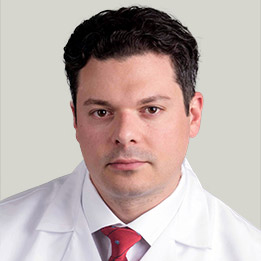Invisalign versus Braces: Which is Better?

I’m a 45 year old who has been embarrassed by my smile for many years. My dentist suggested Invisalign because I don’t want to draw even more attention to my smile with metal braces. Can my dentist straighten my teeth with Invisalign as well as an orthodontist could with braces?
Sincerely,
Sarah T.
Thanks for your question – it’s one I get asked a lot, and it’s important that you do your research before undergoing orthodontic treatment. Invisalign took the orthodontic world by storm when it was first introduced, and because of that, more providers are clamoring to use it, thinking it keeps them ahead of the curve. As with any orthodontic treatment, the most important factor is the provider you choose. Many orthodontists and even dentists can be Invisalign providers, but they aren’t all equal. Invisalign certification is amazingly just an 8 hour course that any dentist can take. You wouldn’t want plastic surgery from a primary care doctor who took an 8 hour surgery course would you? No, you would want a well-trained and experienced surgeon completing your procedure.The same is true with your orthodontist. During my orthodontic residency, I worked directly with the developers of Invisalign to ensure treatment was as efficient as possible. But more than that, as an orthodontist I have the unique knowledge to fully understand tooth movement, and how the jaw functions.An orthodontist will treat you as a unique patient with your own individual needs. And that means telling you the truth if Invisalign isn’t the best option for you.
And in a lot of cases, Invisalign cannot provide the efficiency braces can. Invisalign is limited in the types of malocclusions it can work with, and a lot of patients see relapse in the years after their Invisalign treatment is finished.
In my opinion, Invisalign is not as effective as braces, and today there are a host of options to choose from when it comes to braces. The clear braces I use are almost invisible to the eye, more efficient and precise, and comfortable to wear.
Sincerely,
Dr. S.
At my recent orthodontic appointment, my orthodontist said Invisalign is a great option for giving me the smile I want. But I’m worried they might not live up to the hype, and don’t want to spend the time and money on treatment if I won’t get the results I want. Is Invisalign as great as my orthodontist says it is?
Sincerely,
David P.
Invisalign is a wonderful treatment option – for some patients. In fact, it’s only really effect on a much smaller number of patients than most orthodontists are willing to admit. The technology is improving, but it still can’t compare to the efficiency of standard metal braces.Here are a few things to consider when comparing Invisalign with the effectiveness of traditional metal braces.
-
- Invisalign doesn’t shift teeth from their roots.
The reason why braces are so effective is that the pressure they apply shifts the entire tooth, including the root, to its new position. Invisalign aligners put the bulk of the force on the upper part of the tooth, which is less effective at moving teeth than when force is also included on the foundation of the tooth.
-
- Invisalign treatment may not last forever.
If you’ve put in the work to get the smile of your dreams, you want it to last as long as possible. Unfortunately, research shows that many Invisalign patients suffer relapses several years after treatment ends.
-
- Invisalign can be more painful than braces.
Just thinking about braces may make your mouth hurt, and you might be surprised to know that Invisalign can actually be even more painful than metal braces. While it’s impossible to get a new smile without a bit of discomfort, studies show that Invisalign patients experience an increase in pain over the course of treatment. This may be because aligners are switched out every two weeks. And patients often complain of discomfort or soreness for up to three days after getting a new aligner.
-
- Braces offer a more steady treatment with fewer surprises.
Many Invisalign patients find their treatment having to be refined once it has already begun. Multiple refinements can often be needed during Invisalign treatment. This simply won’t be the case with braces. They’ll offer a much steadier treatment, and we won’t have as many surprises pop up along the way.
Invisalign is a great technology that has its place, however, it is not as effective as braces.If you want to focus your time and money on the best treatment option, I recommend braces. Clear braces will be almost invisible to the eye, while providing the high level of efficiency that is required to properly move teeth to their desired locations.
Sincerely,
Dr. S.
My orthodontist says that Invisalign is the primary treatment option he likes to use on teens and adults because it fits so well into busy lifestyles. My teenage son needs orthodontic treatment, but I’m worried Invisalign isn’t right for him – he’s forgetful and doesn’t always take the best care with brushing and flossing. Should I tell the orthodontist my worries?
Sincerely,
Susan R.
Yes, you should definitely discuss these concerns with the orthodontist. Not every patient is an ideal candidate for Invisalign, not just because of the limits in the types of malocclusions it can effectively correct, but because not ever patient will be ideally committed to their role in the treatment process.Unlike braces, Invisalign are highly dependent on the patient. Because the aligners are removable, that means you can take it out at any time. While being able to remove the aligners when eating, brushing and flossing is a big perk for patients, it can also be a drawback. The less you wear the aligners, the less effective they will be. It’s easy to come up with excuses not to wear them, but they are most effective when worn at least 22 hours a day.You won’t have that problem with braces, because they will remain on your teeth until your orthodontist removes them. While braces still require involvement from you and your role in treatment is an important one, there is much less chance of hindering your own treatment.And if you have a teen who already doesn’t pay close attention to their oral hygiene, there’s another big drawback to consider. Invisalign can lead to tooth decay.
One of the biggest advantages of Invisalign is also a downfall – it’s removable. It’s often touted that this means it’s better for your oral health, but that just isn’t true. An article in the Journal of Clinical Orthodontics discovered that most patients wearing these kinds of aligners forgot to remove the aligner when drinking. And that causes sugars and bacteria to get trapped in the mouth under the aligner. Your saliva should work to wash away sugars and bacteria, but when your teeth are underneath an aligner, those harmful things can get trapped, too.
And if your teen doesn’t brush or rinse his mouth out after eating, instead just putting the aligners right back in, all the food particles that haven’t yet been washed away will interact with bacteria that may already be living in the mouth. This can lead to plaque, which then leads to tooth decay.
Invisalign is only as effective as the patient is committed. If you don’t think your son will wear his aligners the prescribed 22 hours a day, and won’t pay extra attention to his oral health, I’d advise against Invisalign.
Sincerely,
Dr. S.
Invisalign Vs. Braces
[table id=1 /]



